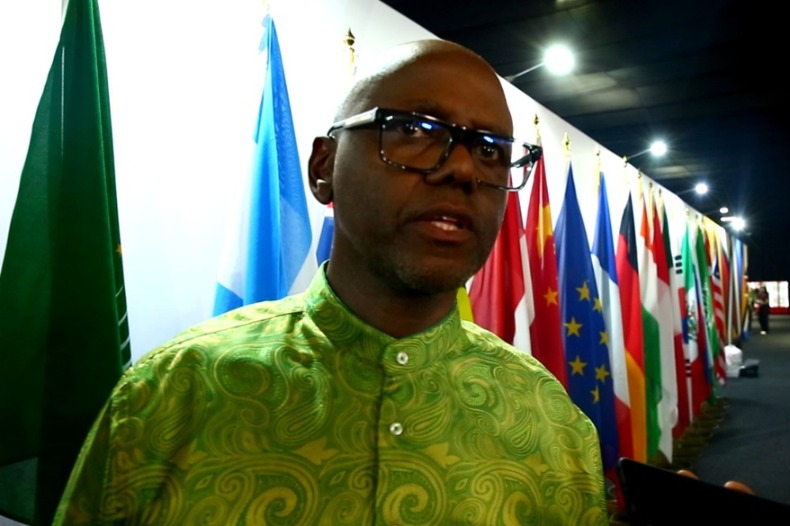Mahjongg becomes popular pastime for Americans

Every Monday and Thursday afternoon in Bryant Park, one of most illustrious public places in downtown New York City, the clink of intricate tiles and ignited outbursts from drawing an unlucky piece can only mean one tantalizing game: mahjong. Mahjongg, originated in China about 150 years ago, is a fascinating, gin rummy-like game played with tiles rather than cards. The game has evolved to become a popular American pastime since it was first introduced to the U.S. in early 1920s.
NATIONAL MAHJONGG LEAGUE HAS 500,000 MEMBERS
"We play with a card, a mahjong card," Linda Fisher, Bryant Park's mahjong area organizer, explained major differences between Chinese and American/Jewish style of the game.
Unlike clubs, hearts, diamonds and spades found in regular playing cards, the tile suits in mahjong are known as dots (circles), bams (bamboos) and craks (characters). Wind, dragon, flower and joker tiles are also used, depending on the version of the game.
Traditional Chinese mahjong sets have 144 tiles, while American version is played with eight additional joker tiles and score cards that are published annually by non-profit organizations like National Mahjongg League.
The league serves as the arbitrator for everything that relates to the American Mahjongg. It started with just 32 members when it was founded in 1937 to standardize the game. Each year proceeds from sales of the league's official rules cards go directly to charitable organizations across the country.
"(Today) they have 500,000 members, so it's very, very popular," Fisher said. "When you buy a card from them, the money goes to charity."
"And every year the card changes just to keep it interesting, so we have to match the patterns on the card instead of making the kinds of Pengs and Kangs and Ches that the other styles of mahjong (have). So the scoring's different," she added.
The American mahjong set varies as well. They include pushers to line up the tiles and push them out. American style uses eight joker tiles that can be put into any sequence. Although before the 1960s, jokers were not used in the game. Instead they played with flower or 16-flower tiles.
"You know a set is old when one of the flowers has a joker sticker on it," Fisher chuckled.
SHAPED MODERN AMERICA AS COMMUNITY BUILDING GAME
The tile game actually has played an important role in developing American culture.
Both Jewish American and Chinese American communities were built around mahjong during the 20th century, according to the research by Annelise Heinz when he was a doctoral candidate in Stanford's Department of History in 2013.
Unlike other leisure games in which "high-stakes partner relationships" pit players against one another, Heinz said that mahjong requires cooperation and strategy between players, which creates an "ideal forum for interaction between people."
Culturally, mahjong was important in Chinatown in the 1920s and 1930s, as it gave Chinese Americans a cultural bond at a time when other many other Americans saw them as "perpetual foreigners," he said.
In many cases, mahjong also became an important way of navigating the internal, gender and generational divides within Chinatown. Mahjongg, Heinz asserts, offered the opportunity for people of different backgrounds to sit down and play together, creating a shared heritage.
In the decades during and after World War II, Heinz found, mahjong became the basis of important community building among American Jewish women. As families moved away from crowded urban centers in the postwar years, they encountered feelings of isolation in new suburban areas. Young Jewish mothers often "turned to mahjong as a way of building new social networks," Heinz said.
he also said that part of the reason mahjong was associated with Jewish women was because they held powerful positions as "leaders, entrepreneurs and game-smiths who created and nurtured American mahjong," especially through the development of the National Mah Jongg League in New York.
HELPS RETIREES BUILD NEW FRIENDSHIPS
This year marks the fourth year of the mahjong area in Bryant Park, which is surrounded by iconic skyscrapers and visited by more than six million people each year.
The program was created when someone from the park saw Fisher's mahjong blog in 2013. They contacted her, asking if she would organize a mahjong area in the park.
Fisher began playing mahjong in 1961 when she was nine years old with her aunt. "We played as a family. I played in her game as I grew up. And when she passed away, I played with her friends. In her honor I teach everybody," she said.
The mahjong area now runs twice a week. On holidays there are even marathons with all kinds of mahjong. Anyone can come to play and learn.
"It's been growing," Fisher said. "It's becoming more popular. Last year on Labor Day, we had about 50 people. And all these people here (came) just from word-of-mouth or on Facebook. People came from Florida and kind of all-around just to meet new players and make new games."
Mahjongg proves to be a better way for seniors to get out of house and build new friendships. It begins loudly with four players shuffling the tiles together in the middle of a table. then, the players help each other build and connect four even walls of tiles, two tiles high, face down. Players then roll dice to see who goes first, divide the walls and sort their tiles. All is calm until a person exclaims "pong" or "chow," when they have made a set of tiles, when they win the game.
"We live in New Jersey and commuted in today to play," said Barney, whose group is attending the Mahjongg World Championships in Las Vegas this September. The four of them try to play at least once a week together.
"You go to people's houses; they serve food. You talk a lot. It's very social. We're addicted," Barney said.
"After a while, you know the card very well. So you know the rules. See, I don't use the card. I know the card," he continued.
Barney also discussed how strategies are present when playing mahjong and how there is a certain amount of luck.
"That's what the books tell you. When everybody gets to a certain level, the game is about 70 percent luck that you grab the tiles that you need. If you're trying to go for something and then all the tiles come out so that you can't win, you have to learn how to switch your hand to something else," he said.
Mahjongg is a brain game that involves skill and luck. Quick thinking and mental complexity are always present in mahjong. The game keeps the mind sharp and in good health. It has been found to preserve brain functions and delay memory loss in elderly individuals.
Juliana Young Koo, a Chinese-American diplomat who worked in the UN Protocol Department, held a passion for mahjong in her later years in New York. She passed away at the age of 111 years old.
































